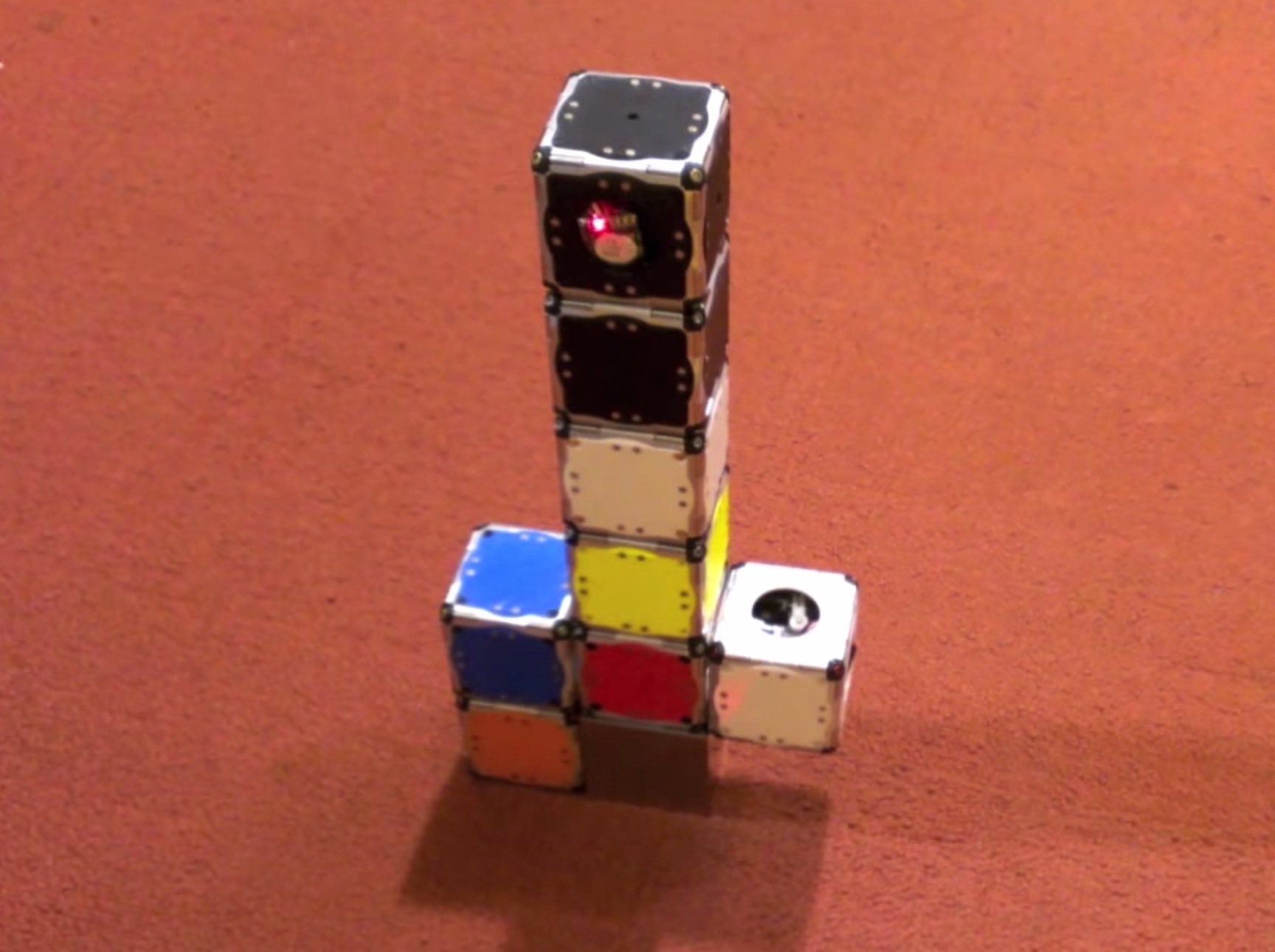
What’s been happening in the world of smart matter lately? And what is “Smart Matter”, anyway?
IEEE Spectrum provides some information on Smart Matter, which is a theoretical method of creating objects with armies self-assembling particles. It’s much like the shape-shifters you might see in science fiction. But this is for real, at least at the research stage. Microelectronics has permitted the creation of very tiny computing machines thus enabling the notion of self assembly. Two approaches are reviewed by IEEE.
One involves smart particles that use magnets to maneuver themselves into the correct position. Each “claytronic atom” or “catom” uses local rules to determine where it should be in the structure. The challenge here is to develop rules that enable the assembly of complex structures. Evidently the Carnegie Mellon team developing this approach has been able to create centimeter-sized caroms that actually work. Now they’re working on shrinking the catom size to a millimeter using photolithography.
The other approach, by MIT, involves “smart pebbles”, which again use rules to determine which pebbles should stick together. Pebbles in positions not required simply fall away. Imagine a vat of such pebbles where you simply reach in and pull out the object. The challenge in this approach is signaling between pebbles to coordinate the “sticking”.
Neither approach is practical at this stage, but with increasing miniaturization of electronics and mechanical components, one can envision the smart matter approach conceivable in the not-near future.
If successful, such approaches might make today’s 3D printers obsolete, at least for some uses. A world of smart matter would be significantly different than today. The commodity material would be the “pebbles” or “catoms” and the digital programming instructions would be the highly priced item. You’d always have on hand a supply of smart matter and simply form it into the correct object as you need them. When finished using the self-assembled object, you’d disassemble it back into the raw smart matter to await the next use.
It’s all about the 3D models. In the future and now.
Via IEEE

